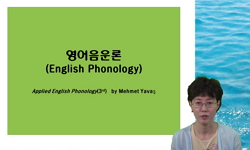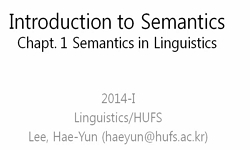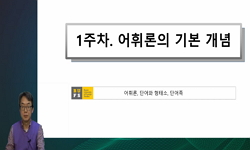본고는 회덕군의 고시 지명을 분석함으로써 의미·음운·표기상의 문제점을 파악하는 것을 그 목적으로 한다. 지명어·한국어·대전지역어의 일반적 특징과 관련해 고시 지명의 문제점을 �...
http://chineseinput.net/에서 pinyin(병음)방식으로 중국어를 변환할 수 있습니다.
변환된 중국어를 복사하여 사용하시면 됩니다.
- 中文 을 입력하시려면 zhongwen을 입력하시고 space를누르시면됩니다.
- 北京 을 입력하시려면 beijing을 입력하시고 space를 누르시면 됩니다.
부가정보
국문 초록 (Abstract)
따라서 국토지리정보원에서 공개한 회덕군 고시 지명을 연구의 대상으로 하였으며, 고시 지명이 해당 지역에서 본래 사용되던 지명이 유지·변화되었을 가능성과 다양한 요인에 의해 생성·변경·폐지되었을 가능성을 고려하였다. 따라서 『회덕읍지』, 『호구총수』, 『조선지지자료』, 『五萬分一地形圖』, 『충청남도지지조서』 등의 자료에서 문증되는 지명과 『대전지명지』, 『한국지명총람』 등의 자료를 함께 검토하여 분석하였으며, 다음의 문제점을 파악하였다.
의미상, 본래의 의미에서 벗어난 경우와 고시 지명에 병기된 한자 지명이 의미 이해에 도움이 되지 않는 경우가 있다. ‘알외, 먼고개, 남해’는 ‘알뫼[卵山], 머고개[梧桐嶺], 남개[木浦]’의 의미가 분명히 드러나지 않으며, ‘소들(所坪), 황소(黃水), 오물(五勿)’에 병기된 한자 지명은 ‘孝坪, 大禾, 梧井’과 차이를 보인다.
음운상, 음운현상이 실현된 변화형이 의미 이해에 방해가 되는 경우와 지명 사용자들의 실제 말소리를 반영하지 못한 경우가 있다. ‘장개울, 배재기, 느릅고지’는 연구개음화, 움라우트, 사잇소리 현상에 의한 변이형으로, 본래의 고유어지명이 가지는 ‘細, 城, 黃’의 의미와 거리가 멀다. 또한 ‘샘머리, 배고개’는 대전지역어와 한국어의 특성을 반영한 ‘새암머리(샴머리), 배오개’가 문증된다.
표기상, 고시 지명 중에서 과도하게 한자어화한 형태와 표기 규정에 맞지 않는 형태가 확인된다. ‘한샘낵이, 목달이’는 ‘찬샘내기, 남달미’의 ‘차-[冷], 목[木]’이 한자어화한 경우이며, 사이시옷 표기 규정이나 두음법칙 등의 표기 규정에 어긋난 고시 지명도 확인된다. 따라서 고시 지명의 중요성을 고려하여 이들 문제에 대한 해결이 필요할 것이며, 대전광역시 전체 고시 지명을 대상으로 한 검토나 미고시 지명 등을 포함한 분석이 이루어져야 할 것이다.
본고는 회덕군의 고시 지명을 분석함으로써 의미·음운·표기상의 문제점을 파악하는 것을 그 목적으로 한다. 지명어·한국어·대전지역어의 일반적 특징과 관련해 고시 지명의 문제점을 파악하고, 이로써 고시 지명 정비의 필요성을 확인하기 위함이다.
따라서 국토지리정보원에서 공개한 회덕군 고시 지명을 연구의 대상으로 하였으며, 고시 지명이 해당 지역에서 본래 사용되던 지명이 유지·변화되었을 가능성과 다양한 요인에 의해 생성·변경·폐지되었을 가능성을 고려하였다. 따라서 『회덕읍지』, 『호구총수』, 『조선지지자료』, 『五萬分一地形圖』, 『충청남도지지조서』 등의 자료에서 문증되는 지명과 『대전지명지』, 『한국지명총람』 등의 자료를 함께 검토하여 분석하였으며, 다음의 문제점을 파악하였다.
의미상, 본래의 의미에서 벗어난 경우와 고시 지명에 병기된 한자 지명이 의미 이해에 도움이 되지 않는 경우가 있다. ‘알외, 먼고개, 남해’는 ‘알뫼[卵山], 머고개[梧桐嶺], 남개[木浦]’의 의미가 분명히 드러나지 않으며, ‘소들(所坪), 황소(黃水), 오물(五勿)’에 병기된 한자 지명은 ‘孝坪, 大禾, 梧井’과 차이를 보인다.
음운상, 음운현상이 실현된 변화형이 의미 이해에 방해가 되는 경우와 지명 사용자들의 실제 말소리를 반영하지 못한 경우가 있다. ‘장개울, 배재기, 느릅고지’는 연구개음화, 움라우트, 사잇소리 현상에 의한 변이형으로, 본래의 고유어지명이 가지는 ‘細, 城, 黃’의 의미와 거리가 멀다. 또한 ‘샘머리, 배고개’는 대전지역어와 한국어의 특성을 반영한 ‘새암머리(샴머리), 배오개’가 문증된다.
표기상, 고시 지명 중에서 과도하게 한자어화한 형태와 표기 규정에 맞지 않는 형태가 확인된다. ‘한샘낵이, 목달이’는 ‘찬샘내기, 남달미’의 ‘차-[冷], 목[木]’이 한자어화한 경우이며, 사이시옷 표기 규정이나 두음법칙 등의 표기 규정에 어긋난 고시 지명도 확인된다. 따라서 고시 지명의 중요성을 고려하여 이들 문제에 대한 해결이 필요할 것이며, 대전광역시 전체 고시 지명을 대상으로 한 검토나 미고시 지명 등을 포함한 분석이 이루어져야 할 것이다.
다국어 초록 (Multilingual Abstract)
In terms of meaning, there are cases where it deviates from the original meaning, and cases where the 'Chinese character notation of Toponym' of the 'officially announced Toponym' does not help in understanding the meaning. 'Al-oe, Meongogae, Namhae' does not clearly reveal the meaning of 'Almoe[卵山], Meogogae[梧桐嶺], Namgae[木浦]', and it is different from the 'Chinese character notation of Toponym' of 'Sodeul(所坪), Hwangso(黃水), Omul(五勿)', which is '孝坪, 大禾, 梧井'. In terms of ‘phoneme’, there are cases where the transformation forms that have realized ‘phonological phenomena’ interfere with the understanding of meaning and cases where they do not reflect the actual ‘phoneme’ of place name users. ‘Jang-gaeul, Baejaegi, Neuleubgoji’ are transformation forms due to Velarization, Umlaut, and ‘Sait-sori Phenomena’, and are far from the meaning of ‘細, 城, 黃’ of the original ‘Native Toponym’. In addition, ‘Saemmeoli, Baegogae’ is attested as ‘Syammeoli, Baeogae’, which reflects the characteristics of the Daejeon regional dialect and Korean. In terms of ‘orthography’, excessively Sino-Koreanized forms and forms that do not conform to the ‘orthography’ regulations are confirmed among the ‘officially announced Toponyms’. ‘Hansaemnaeg-i, Mogdal-i’ is a case where ‘Cha-[冷], Mok[木]’ of ‘Chansaemnaegi, Namdalmi’ are Sino-ized, and ‘officially announced Toponyms’ that are against the ‘Korean orthography’ such as ‘Orthography of ‘Sai-siot’’ and ‘the initial law’ are also confirmed.
In this study, we analyzed the 'officially announced Toponym' of Hoedeok-gun in terms of meaning, 'phoneme', and 'orthography' to identify problematic cases. In terms of meaning, there are cases where it deviates from the original meaning, and cases w...
In this study, we analyzed the 'officially announced Toponym' of Hoedeok-gun in terms of meaning, 'phoneme', and 'orthography' to identify problematic cases.
In terms of meaning, there are cases where it deviates from the original meaning, and cases where the 'Chinese character notation of Toponym' of the 'officially announced Toponym' does not help in understanding the meaning. 'Al-oe, Meongogae, Namhae' does not clearly reveal the meaning of 'Almoe[卵山], Meogogae[梧桐嶺], Namgae[木浦]', and it is different from the 'Chinese character notation of Toponym' of 'Sodeul(所坪), Hwangso(黃水), Omul(五勿)', which is '孝坪, 大禾, 梧井'. In terms of ‘phoneme’, there are cases where the transformation forms that have realized ‘phonological phenomena’ interfere with the understanding of meaning and cases where they do not reflect the actual ‘phoneme’ of place name users. ‘Jang-gaeul, Baejaegi, Neuleubgoji’ are transformation forms due to Velarization, Umlaut, and ‘Sait-sori Phenomena’, and are far from the meaning of ‘細, 城, 黃’ of the original ‘Native Toponym’. In addition, ‘Saemmeoli, Baegogae’ is attested as ‘Syammeoli, Baeogae’, which reflects the characteristics of the Daejeon regional dialect and Korean. In terms of ‘orthography’, excessively Sino-Koreanized forms and forms that do not conform to the ‘orthography’ regulations are confirmed among the ‘officially announced Toponyms’. ‘Hansaemnaeg-i, Mogdal-i’ is a case where ‘Cha-[冷], Mok[木]’ of ‘Chansaemnaegi, Namdalmi’ are Sino-ized, and ‘officially announced Toponyms’ that are against the ‘Korean orthography’ such as ‘Orthography of ‘Sai-siot’’ and ‘the initial law’ are also confirmed.
동일학술지(권/호) 다른 논문
-
함경도 지명에 대하여 - 1930,40년대 『한글』에 실려 있는 지명자료를 중심으로
- 한국지명학회
- 김정태
- 2024
- KCI등재
-
매체를 통해 본 지명의 상징성과 사회적 의미 - 지명 관련 표현을 중심으로
- 한국지명학회
- 이윤희
- 2024
- KCI등재
-
자연의 지명화와 유산화 - 제주도 폭포의 차별적인 지명화와 명승화 과정
- 한국지명학회
- 김순배
- 2024
- KCI등재
-
전남 남해안 지역의 지명 고찰 - 『조선지지자료(朝鮮地志資料)』의 흥양군, 돌산군, 여수군 자료를 중심으로
- 한국지명학회
- 황금연
- 2024
- KCI등재





 KISS
KISS






